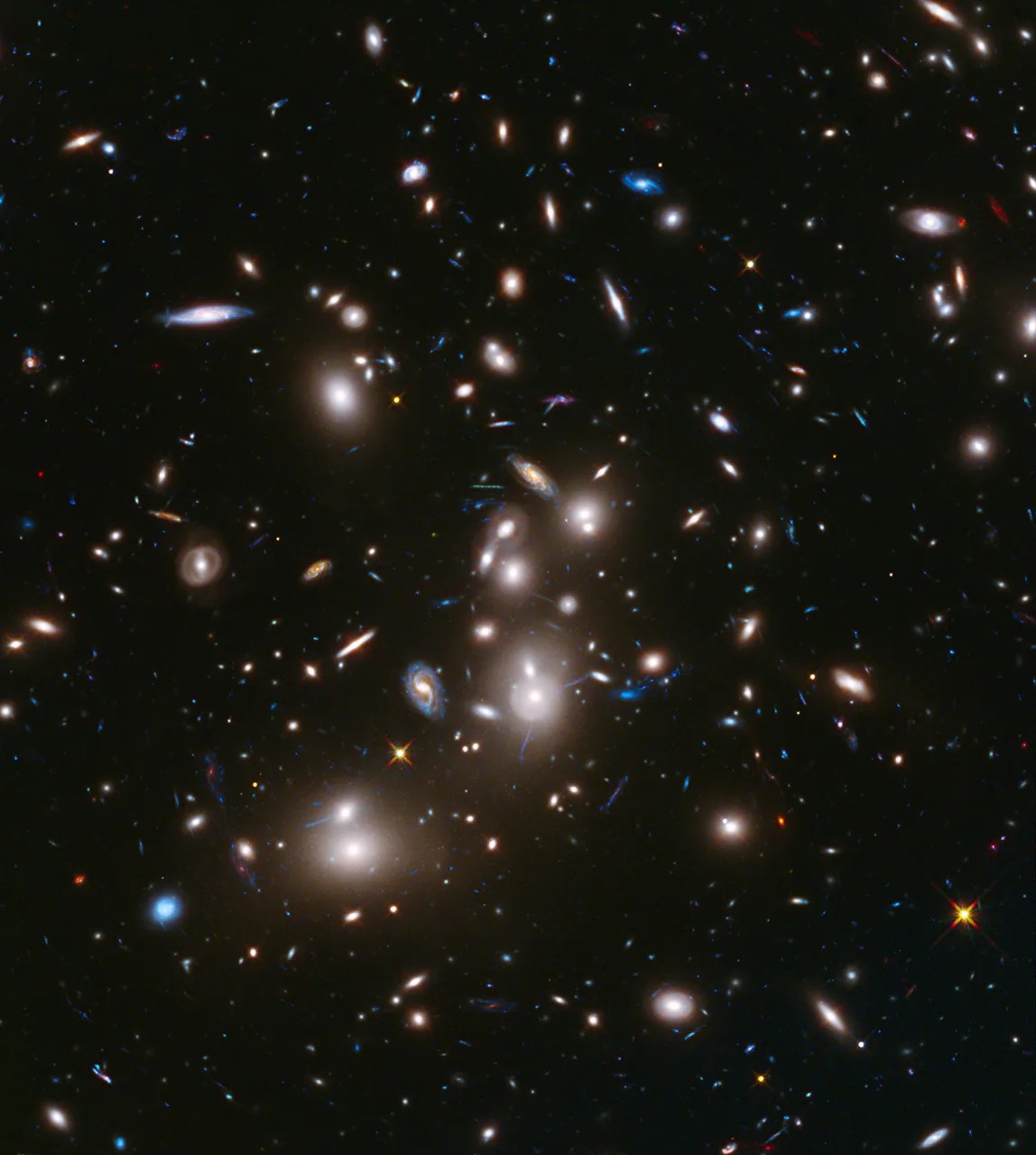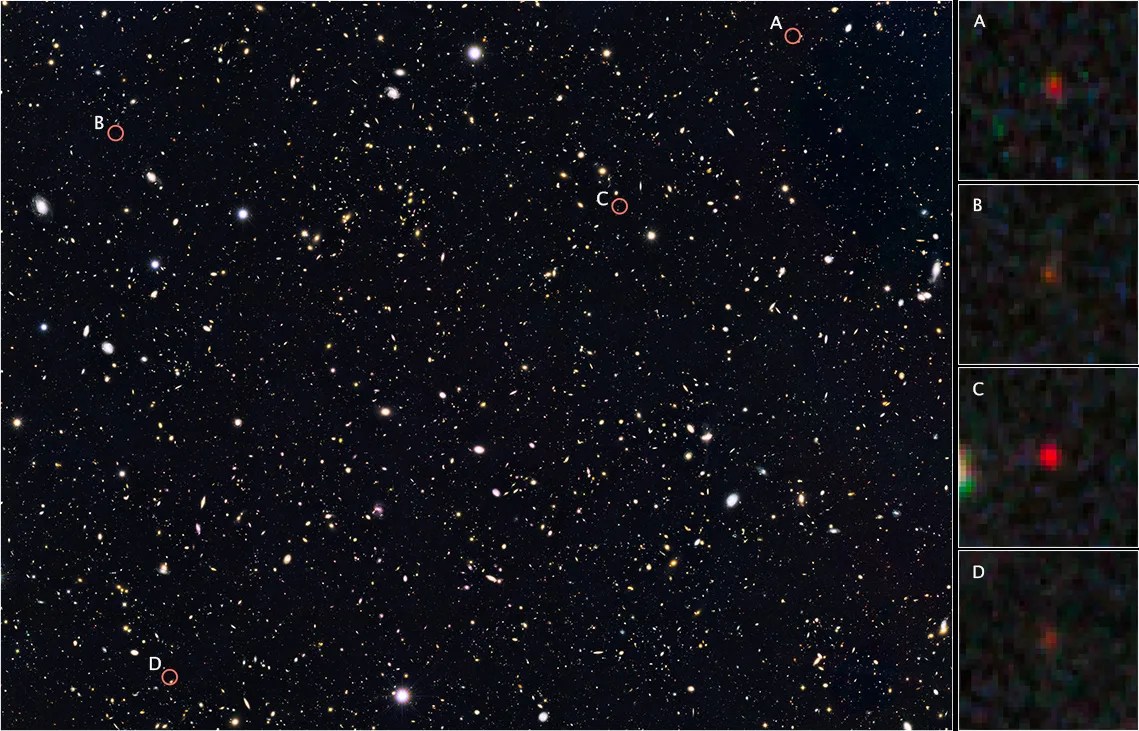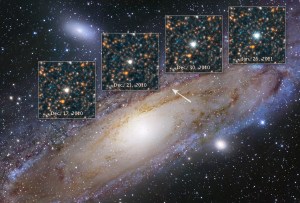NASA's Hubble and Spitzer Space Telescopes are providing a new perspective on the remote universe, including new views of young and distant galaxies bursting with stars.

NASA’s Hubble and Spitzer Space Telescopes are providing a new perspective on the remote universe, including new views of young and distant galaxies bursting with stars. Scientists described the findings Tuesday in a news conference sponsored by the American Astronomical Society.
The discoveries include four unusually bright galaxies as they appeared 13 billion years ago and the deepest image ever obtained of a galaxy cluster.
The ultra-bright, young galaxies, discovered using data from Hubble and Spitzer, are bursting with star-formation activity, which accounts for their brilliance. The brightest one is forming stars approximately 50 times faster than our Milky Way galaxy does today. These fledgling galaxies are only one-twentieth the size of the Milky Way, but they probably contain about 1 billion stars crammed together.
Although Hubble has previously identified galaxies at this early epoch, astronomers were surprised to find objects that are about 10 to 20 times more luminous than anything seen previously.
“These just stuck out like a sore thumb because they are far brighter than we anticipated,” explained Garth Illingworth of the University of California at Santa Cruz. “There are strange things happening regardless of what these sources are. We’re suddenly seeing luminous, massive galaxies quickly build up at such an early time. This was quite unexpected.”

The galaxies were first detected with Hubble. Its sharp images are crucial to finding such distant galaxies and enabled the astronomers to measure their star-formation rates and sizes. Using Spitzer, the astronomers were able to estimate the stellar masses by measuring the total stellar luminosity of the galaxies.
“This is the first time scientists were able to measure an object’s mass at such a huge distance,” said Pascal Oesch of Yale University in New Haven, Conn. “It’s a fabulous demonstration of the synergy between Hubble and Spitzer.”
The result bodes well for NASA’s James Webb Space Telescope, currently in development. Scientists anticipate using Webb to look even further back in time to find young, growing galaxies as they existed only a few hundred million years after the universe began in the big bang.
An unprecedented long-distance view of the universe comes from an ambitious collaborative project with Hubble called The Frontier Fields. It is the longest and deepest exposure obtained to date of a cluster of galaxies, and shows some of the faintest and youngest galaxies ever detected. The image contains several hundred galaxies as they looked 3.5 billion years ago.
Appearing in the foreground of the image is Abell 2744, a massive galaxy cluster located in the constellation Sculptor. The immense gravity in Abell 2744 is being used as a lens to warp space and brighten and magnify images of more distant background galaxies. The more distant galaxies appear as they did longer than 12 billion years ago, not long after the big bang.
The Hubble exposure reveals almost 3,000 of these background galaxies interleaved with images of hundreds of foreground galaxies in the cluster. Their images not only appear brighter, but also smeared, stretched and duplicated across the field. Because of the gravitational lensing phenomenon, the background galaxies are magnified to appear as much as 10 to 20 times larger than they would normally appear. Furthermore, the faintest of these highly magnified objects is 10 to 20 times fainter than any galaxy observed previously. Without the boost from gravitational lensing, the many background galaxies would be invisible.
The Hubble exposure will be combined with images from Spitzer and NASA’s Chandra X-ray Observatory to provide new insight into the origin and evolution of galaxies and their accompanying black holes.
For images and more information about the ultra-bright young galaxies, visit: http://hubblesite.org/news/2014/05 . To see more images and information about The Frontier Fields campaign, visit: http://hubblesite.org/news/2014/01 .
NASA’s Jet Propulsion Laboratory, Pasadena, Calif., manages the Spitzer Space Telescope mission for NASA’s Science Mission Directorate, Washington. Science operations are conducted at the Spitzer Science Center at the California Institute of Technology in Pasadena. Spacecraft operations are based at Lockheed Martin Space Systems Company, Littleton, Colorado. Data are archived at the Infrared Science Archive housed at the Infrared Processing and Analysis Center at Caltech. Caltech manages JPL for NASA. For more information about Spitzer, visit http://spitzer.caltech.edu and http://www.nasa.gov/spitzer .






























